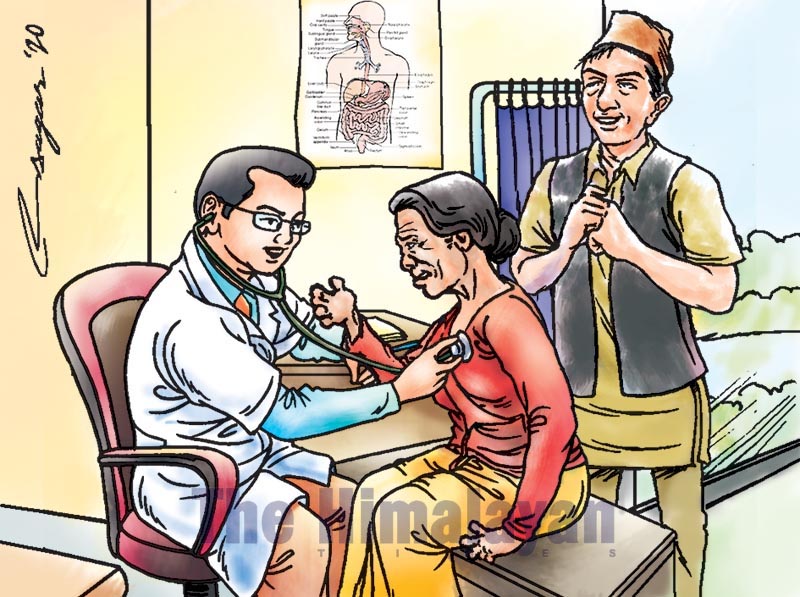Movement against leprosy: End discrimination
Joining hands with all stakeholders, we should raise awareness against the existing leprosy-related misconceptions and superstitions. The government should create an environment where leprosy patients are no longer looked down upon
We are celebrating the 67th World Leprosy Day this year with the theme “Our Movement against Leprosy: Ending Discrimination and Respecting Human Right” which falls on 26th January 26. Since 1953, French philanthropist and humanitarian, Raoul Follereau, was the initiator for this day to raise global awareness about this chronic infectious disease.
The aims of this day are to raise leprosy related awareness, open everyone’s eyes that leprosy is easily curable and early treatment averts most disabilities and reduces existing stigma and discrimination towards leprosy. This creates a social environment where people with leprosy can live with harmony and dignity.
Leprosy, bacterial-Mycobacterium Lepre caused Hansen’s disease predominantly affects skin and peripheral nerves with long-term consequences of disability and deformities if treatment is delayed. Leprosy has been existed since ancient times, often with terrifying, negative stigmas. Outbreaks of leprosy have affected and panicked people on every continent. And even today, according to WHO, newly diagnosed leprosy cases remains significantly high globally, as 208,619 new cases were detected in 2018 from 127 countries having the highest leprosy burden in South-East Asia region. In Nepal alone, 3,282 new leprosy cases were detected in the fiscal year 2018/19, almost breaking the WHO’s elimination.
Thousands of people are still suffering from leprosy due to inaccessibility of basic healthcare services and continued stigma and discrimination. Weiss and Ramakrishna defined stigma as a social process or related personal experience characterized by exclusion, rejection, blame or devaluation resulting from experience of an adverse social judgment about a person with health problems. Leprosy with its high stigma, affects thousands Nepalese. This is apparent in the negative effects it has on social status, proper dignity and rights, employment opportunities and family/marriage. A leprosy discriminating law – “a ground for divorce” still exists in Nepal despite the Indian Parliament/ the Supreme Court abolished the law in 2019.
Similar intervention against leprosy discrimination in Japan was undertaken, when Prime Minister Shinzo Abe offered his sincere apologies on July 9, 2019 for the pain and
suffering inflicted on Japanese leprosy patients and their families who suffered discrimination and isolation for decades in Japan, accompanied by 340 million yen of pay damages to 541 plaintiffs which was ordered by the Japanese Court.
Stigma towards leprosy was reported in around 52 per cent in communities when the De Stigter conducted a study in 300 community members in eastern-Nepal in 2000, revealed that stigma/ discrimination is significantly high towards people with leprosy. Because of the existing stigma towards leprosy, people are reluctant to seek support when symptoms appear, causing a delay in diagnosis resulting in disabilities/ deformities. Many citizens living with leprosy are unable to effectively work due to disability, hence they face the stigma/ discrimination which further restrict working.
There are misconceptions and superstitions about leprosy, which cause skepticism and fuel stigma/ discrimination and ultimately ostracise people with leprosy. To some extant, cavillous myths of leprosy are – leprosy is the result of sin or a curse, leprosy causes the fingers and toes to fall off, and can be transmitted by sitting next to a person suffering from leprosy. A plethora of leprosy superstitions still exist in the society and community. For example, a 45-year old leper from Ramechap (Pseudo name) says, “My wife rejected me due to leprosy and I can’t go outside as freely as I could before I had leprosy. I can’t participate in as freely in social events as before. I emotionally feel down and frustrated with my life”.
Dhanmaya Shahi, 68, from Humla, was kept in a cave for eight years because of leprosy. Similarly, due to leprosy Rautahat District resident Makhan Devi was left by her husband and thrown out in the streets with three children by her mother-in-law. She is still suffering from the stigma, for example, her sister in-law would place her cup/ plates apart from everyone else’s during and after meals. These are just a few miserable examples of true stories taken from thousands of case studied.
Joining hands with all stakeholders, we should raise awareness against these existing leprosy related misconceptions and superstitions. The government should lead the initiatives incorporating all stakeholders to establish an environment in their own communities where leprosy patients are no longer looked down upon.
In their societies/ communities where they can live a dignified, independent and comfortable life and make sure that their voices are heard, their opinions are valued and their rights are reserved and respected. In addition, the government and relevant stakeholders should prioritise programmes and activities for empowerment (education and employment), free healthcare services, and improving overall quality of life of people living with leprosy and their families.
It’s the right time to change our mentality towards leprosy patients thought mass awareness and potential interventions at all levels, from the grassroots level to policymakers.






